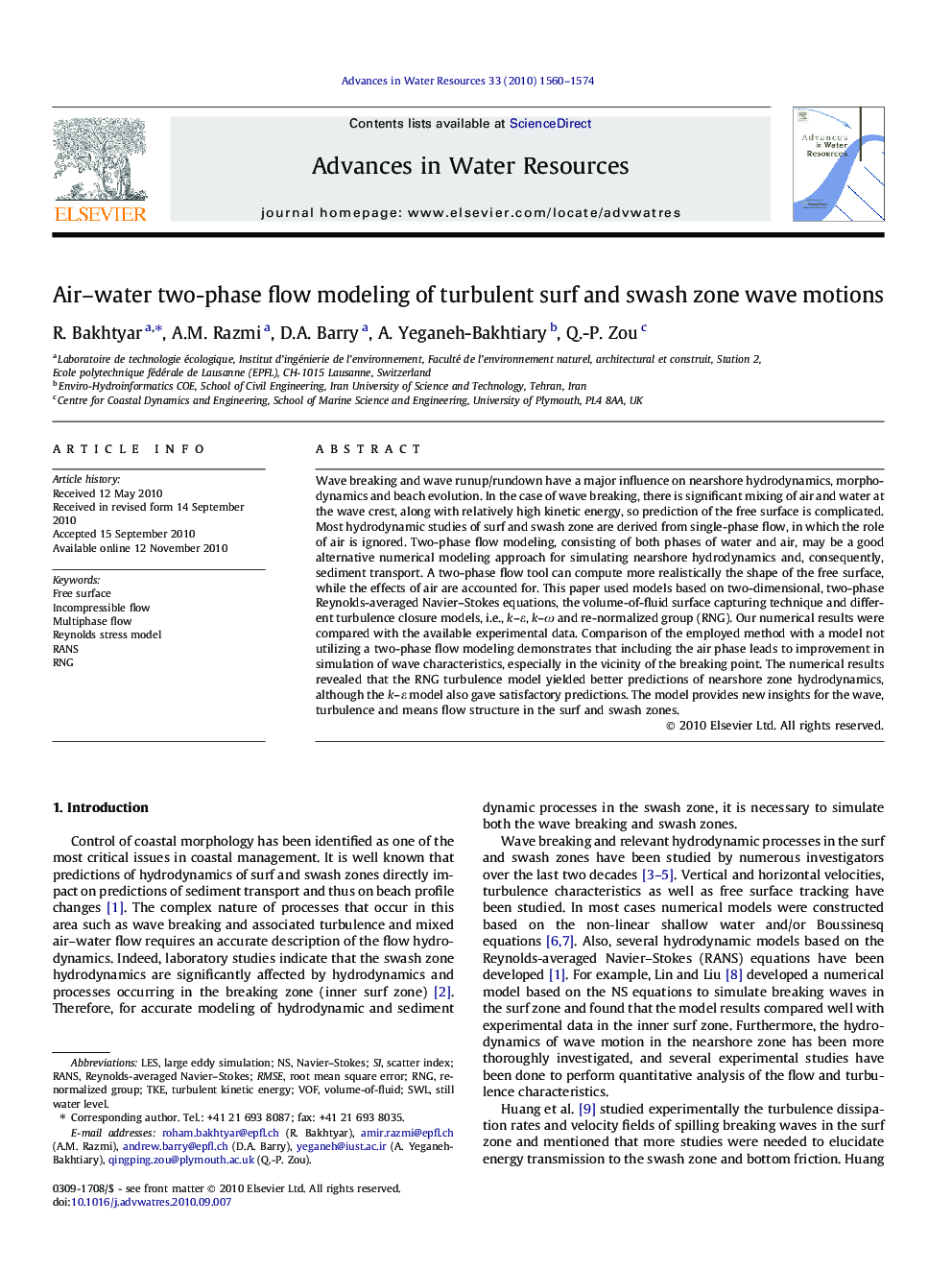| کد مقاله | کد نشریه | سال انتشار | مقاله انگلیسی | نسخه تمام متن |
|---|---|---|---|---|
| 4526194 | 1323820 | 2010 | 15 صفحه PDF | دانلود رایگان |

Wave breaking and wave runup/rundown have a major influence on nearshore hydrodynamics, morphodynamics and beach evolution. In the case of wave breaking, there is significant mixing of air and water at the wave crest, along with relatively high kinetic energy, so prediction of the free surface is complicated. Most hydrodynamic studies of surf and swash zone are derived from single-phase flow, in which the role of air is ignored. Two-phase flow modeling, consisting of both phases of water and air, may be a good alternative numerical modeling approach for simulating nearshore hydrodynamics and, consequently, sediment transport. A two-phase flow tool can compute more realistically the shape of the free surface, while the effects of air are accounted for. This paper used models based on two-dimensional, two-phase Reynolds-averaged Navier–Stokes equations, the volume-of-fluid surface capturing technique and different turbulence closure models, i.e., k–ε, k–ω and re-normalized group (RNG). Our numerical results were compared with the available experimental data. Comparison of the employed method with a model not utilizing a two-phase flow modeling demonstrates that including the air phase leads to improvement in simulation of wave characteristics, especially in the vicinity of the breaking point. The numerical results revealed that the RNG turbulence model yielded better predictions of nearshore zone hydrodynamics, although the k–ε model also gave satisfactory predictions. The model provides new insights for the wave, turbulence and means flow structure in the surf and swash zones.
Research highlights
► The model is suitable for the simulation of water-air mixing flow in the nearshore zone.
► The two-phase-RNG approach outperforms k-ε and k-ω turbulent closure models in terms of prediction capability for surf and swash hydrodynamics.
► The model provides new insights for the wave, turbulence and means flow structure in the surf and swash zones.
► This non-hydrostatic model is more appropriate than the hydrostatic counterpart since wave breaking plays a crucial role in the nearshore hydrodynamics.
Journal: Advances in Water Resources - Volume 33, Issue 12, December 2010, Pages 1560–1574